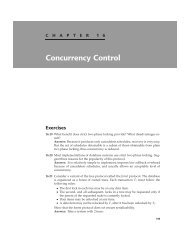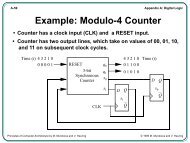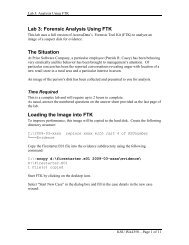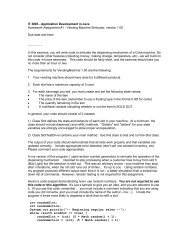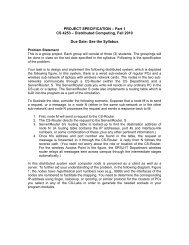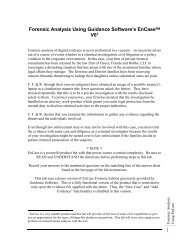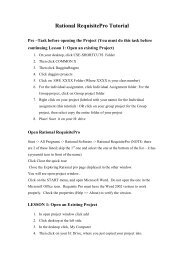You also want an ePaper? Increase the reach of your titles
YUMPU automatically turns print PDFs into web optimized ePapers that Google loves.
DRAFT, February 18, 2003, Page 53<br />
jGRASP provides two approaches to controlling the contents/display of your UML diagram. The first (Edit<br />
– Settings) allows you to control the contents of the diagram by excluding certain categories of classes<br />
(e.g., external superclasses, external interfaces, and all other external references). After you<br />
generated/updated the diagram based on these exclusions, the second approach (View -- ) allows you to<br />
make visible (or hide) certain categories of classes and dependencies in the UML diagram. Both<br />
approaches are described below.<br />
Consider the following example. Suppose you want to include the JDK classes (gray boxes) in your UML<br />
diagram (the default is to exclude them). Then you will need to edit the UML generation settings in order<br />
to not exclude these items from the diagram. Also, if you do not see the red and black dependency lines<br />
expected, then you may need to change the View settings. These are described below.<br />
Excluding (or not) items from the diagram - On the UML window menu, click on Edit – Settings…,<br />
which will bring up the UML Settings dialog. For example, to not exclude all JDK classes, under<br />
Exclude by Type of Class, uncheck (turn OFF) the checkbox the excludes JDK Classes, as shown in<br />
Figure 39. Note, synthetic classes are created by the Java compiler, and are usually not included in the<br />
Figure 39. Editing the UML Settings





